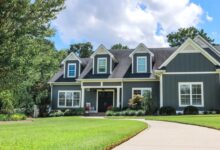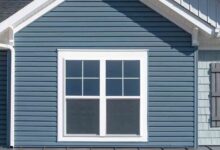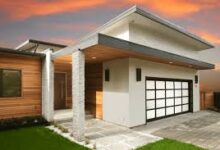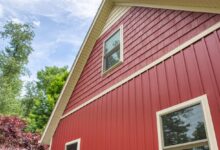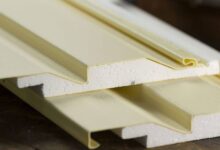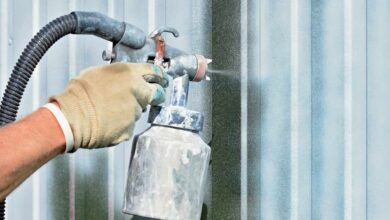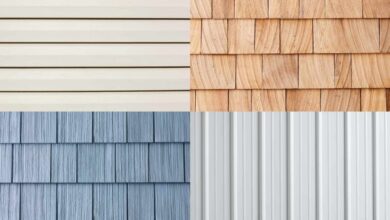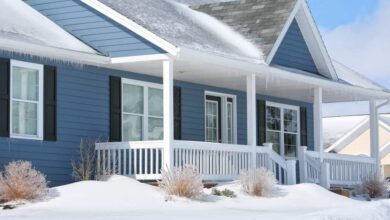Home Resale Value with New Siding
When it comes to increasing the resale value of your home, few renovations have as much impact as updating the exterior. One of the most effective ways to boost your home’s curb appeal and its overall market value is through new siding. Whether you’re considering selling your home in the near future or simply want to enhance its appearance and energy efficiency, investing in new siding can deliver substantial returns.
In this article, we’ll explore how new siding impacts home resale value, review the benefits of different siding materials, and provide insights into the most popular siding options. Additionally, we’ll look at real product examples, pricing, and where you can buy high-quality siding for your next project.
How New Siding Impacts Home Resale Value
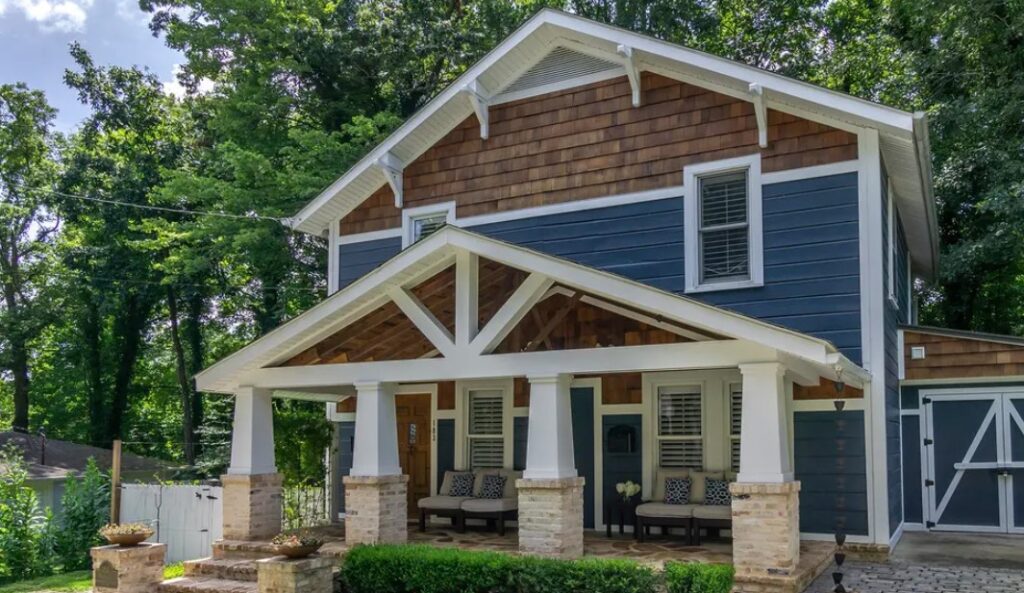
When it comes to selling a home, first impressions matter significantly, and the exterior of your property plays a pivotal role in this. The condition, style, and overall aesthetic of your home’s siding can directly influence how potential buyers perceive your home, and thus, how much they are willing to pay. A well-maintained exterior with high-quality siding can boost your home’s marketability, reduce time on the market, and increase its resale value. This article will delve deeper into the specific ways new siding can impact the resale value of your home and why it’s a crucial investment for homeowners looking to sell.
1. Curb Appeal and First Impressions
One of the most significant ways new siding affects resale value is by enhancing your home’s curb appeal. Curb appeal refers to how attractive your home looks from the street, which plays a vital role in the emotional response of potential buyers. When potential buyers approach your home for the first time, they’re forming an opinion based on the exterior, including the condition and style of the siding.
- Aesthetic Appeal: Homes with dated, cracked, or fading siding often give off the impression of neglect, signaling to buyers that the home may require costly repairs or updates. On the other hand, new, high-quality siding makes a home appear well-maintained, clean, and inviting. Whether you opt for contemporary, sleek lines or a more traditional style, the aesthetic transformation of your home’s exterior can drastically improve its perceived value.
- Appeal to Buyers’ Emotions: Buyers often make decisions based on emotional appeal. When the siding is modern and well-kept, it can evoke a sense of comfort and security, subconsciously making buyers feel that the house is a solid, worthwhile investment. In fact, according to the National Association of Realtors (NAR), homes with attractive exteriors tend to sell faster and for a higher price, particularly when the buyers are emotionally drawn to the property right away.
2. Return on Investment (ROI) and Financial Impact
Investing in new siding is one of the home improvement projects that typically yields a high return on investment (ROI). In fact, replacing siding is one of the top improvements in terms of resale value, often showing returns ranging from 75% to 80% of the total cost. This means that for every dollar you spend on new siding, you can expect to recover a large portion of it when you sell your home.
- Cost Recovery: The ROI of new siding is significantly higher than many other home improvement projects, including kitchen remodels or bathroom upgrades. The appeal of updated siding can attract more buyers and help your home stand out in a competitive real estate market. If your home’s current siding is damaged or outdated, upgrading it could be the key to fetching a higher price when you sell.
- Increasing Home Value: Depending on the material you choose, the value your home adds by installing new siding can vary. For example, fiber cement siding or engineered wood siding, which are both highly durable and have a premium look, can increase your home’s value substantially. In contrast, vinyl siding may offer a more budget-friendly option but still provides a solid return due to its ease of maintenance and long-term durability. Regardless of the material, fresh siding can boost your home’s selling price and overall appeal.
3. Improved Energy Efficiency and Lower Operating Costs
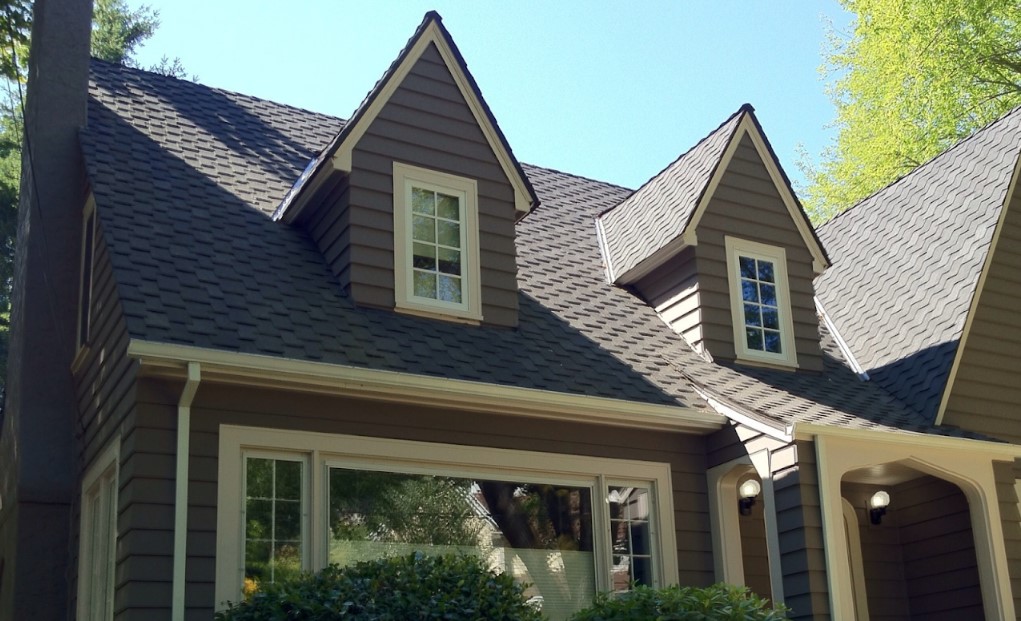
In addition to enhancing curb appeal, new siding can positively affect your home’s energy efficiency—an important factor for many buyers. Homes with high energy efficiency tend to be more attractive to buyers because they promise lower utility bills, reducing the ongoing cost of living in the home. New siding materials often come with advanced insulation features that can help regulate indoor temperatures and reduce energy costs.
- Energy-Efficient Siding: Siding products like insulated vinyl siding or fiber cement siding can improve your home’s insulation by reducing heat loss during winter and keeping the house cooler in summer. This insulation effect can significantly cut down on heating and cooling costs, which is an attractive benefit for energy-conscious buyers. In fact, some studies have shown that homes with energy-efficient exteriors can command a higher selling price because buyers see them as an investment in long-term savings.
- Appeal to Environmentally-Conscious Buyers: Additionally, some siding materials, such as those made from recycled materials or sustainable sources, appeal to environmentally-conscious buyers. By opting for eco-friendly siding, you can attract buyers who prioritize sustainability, which can further increase your home’s marketability and resale value. Homes that reduce their carbon footprint are becoming increasingly desirable as more people become aware of their environmental impact.
4. Increased Durability and Reduced Maintenance Costs
Siding that is aging or damaged can lead to costly repairs, and many potential buyers will be wary of having to address these issues themselves. New siding not only enhances the aesthetic appeal of your home but also ensures that it is durable and low-maintenance for years to come. Buyers are often willing to pay a premium for homes that require little upkeep and are built with long-lasting materials.
- Low Maintenance: Newer siding options, such as vinyl, fiber cement, and engineered wood, often come with longer warranties and require much less maintenance than older siding materials. For example, vinyl siding never needs to be repainted, and fiber cement siding is resistant to rot, termites, and fading. For homeowners looking to sell, this is an attractive selling point because it reassures buyers that they won’t face unexpected maintenance costs after moving in.
- Durability and Long-Term Protection: New siding materials are designed to withstand the elements, such as extreme weather, UV exposure, and moisture. This level of durability means that the home will maintain its integrity for a longer period, which is reassuring for buyers. The reduced need for repairs, whether related to siding, paint, or insulation, increases the overall appeal of the home.
5. Better Protection from the Elements
Siding does more than just look good; it protects your home from the elements. The right siding helps safeguard the structure from water damage, wind, and other environmental factors that could deteriorate the integrity of the building. When you replace old or damaged siding, you’re not only improving the appearance of your home but also providing a better shield against the elements.
- Weather Resistance: New siding materials like fiber cement and engineered wood siding offer superior protection against harsh weather conditions. For example, fiber cement is highly resistant to water, rot, and pests, which helps protect your home’s structure from long-term damage. Homes with more durable exteriors will likely be more attractive to buyers who are looking for properties with fewer potential problems and lower risks of future damage.
- Moisture Control: Certain types of siding, especially those with advanced moisture barriers, prevent water from seeping into the walls of the home, which can cause mold and mildew growth. Not only does this improve the quality of life for the homeowner, but it also minimizes potential concerns for buyers when inspecting the property.
6. Appealing to Buyers’ Desire for Modern Design
Homebuyers, particularly younger generations, are often looking for homes that reflect modern aesthetics and design trends. New siding provides the perfect opportunity to update the look of your home and keep it in line with current trends. A fresh, updated exterior can make your property feel more contemporary, which is a significant selling point for many buyers.
- Customization Options: With modern siding materials, homeowners have access to a wide variety of colors, finishes, and textures that can fit different architectural styles. Whether you prefer a classic, neutral look or something bold and distinctive, new siding allows you to customize your home’s exterior to match your personal taste or the latest trends in the housing market.
- Trendy Designs: Siding manufacturers frequently introduce new design options to meet consumer demand for contemporary, sleek aesthetics. For example, horizontal lap siding, vertical boards, and even board-and-batten designs have all gained popularity as modern, stylish options. By choosing an up-to-date siding design, you ensure your home remains attractive to today’s buyers.
Ultimately, new siding can have a profound impact on your home’s resale value. From improving curb appeal to enhancing energy efficiency and offering long-term durability, new siding makes your home more appealing to potential buyers. By increasing both the aesthetic appeal and functional qualities of your home, new siding creates an exterior that resonates with buyers on multiple levels, often leading to faster sales and higher offers.
Whether you choose premium materials like fiber cement or more affordable options like vinyl, updating your siding is one of the most effective ways to increase your home’s market value. By making this investment, you’re not just beautifying your home but also setting it up for a higher return when it’s time to sell.
Best Siding Materials for Home Resale Value
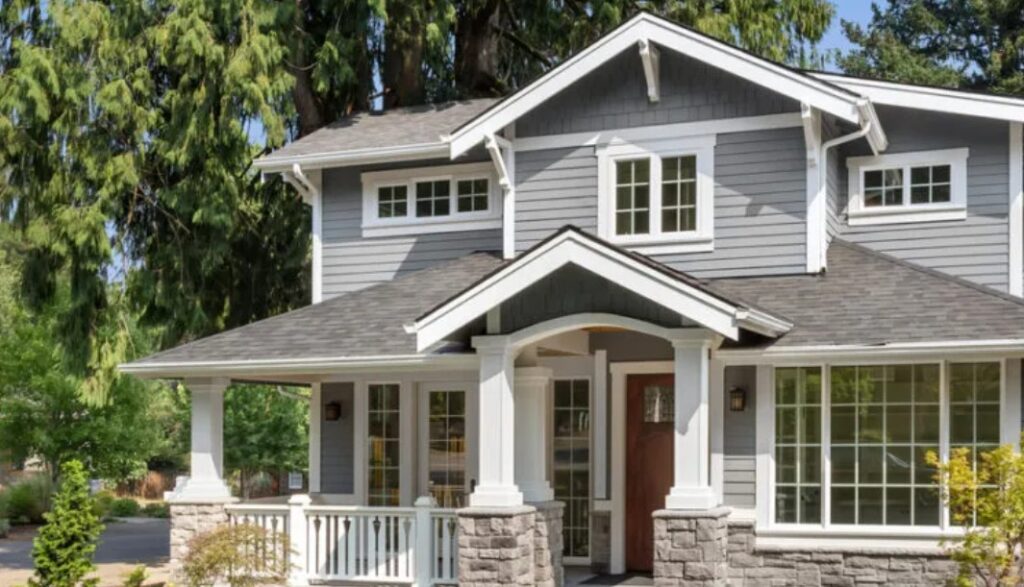
There are several siding materials available, each offering unique benefits. The material you choose will impact both your home’s aesthetic appeal and its energy efficiency. Here, we will look at three popular siding options, their features, pros, cons, and where you can purchase them.
Fiber Cement Siding (James Hardie)
James Hardie is one of the leading brands in the fiber cement siding market. Known for its durability, aesthetic appeal, and low maintenance requirements, fiber cement siding is an excellent investment for homeowners looking to increase their home’s resale value.
- Features: James Hardie fiber cement siding comes in a variety of styles, including traditional lap siding, shingles, and vertical boards. It is known for its fire resistance, ability to withstand extreme weather, and longevity, often lasting 50 years or more.
- Pros: Extremely durable, low-maintenance, fire-resistant, pest-resistant, and available in a wide range of colors. Fiber cement siding can be painted or comes pre-painted, offering customization.
- Cons: Heavier than vinyl, requiring professional installation. It’s more expensive than vinyl and can be more labor-intensive to install.
- Price: Typically ranges from $0.70 to $1.50 per square foot for materials, with installation costs varying based on location and the complexity of the project.
- Where to Buy: James Hardie Fiber Cement Siding
Vinyl Siding (CertainTeed Monogram®)
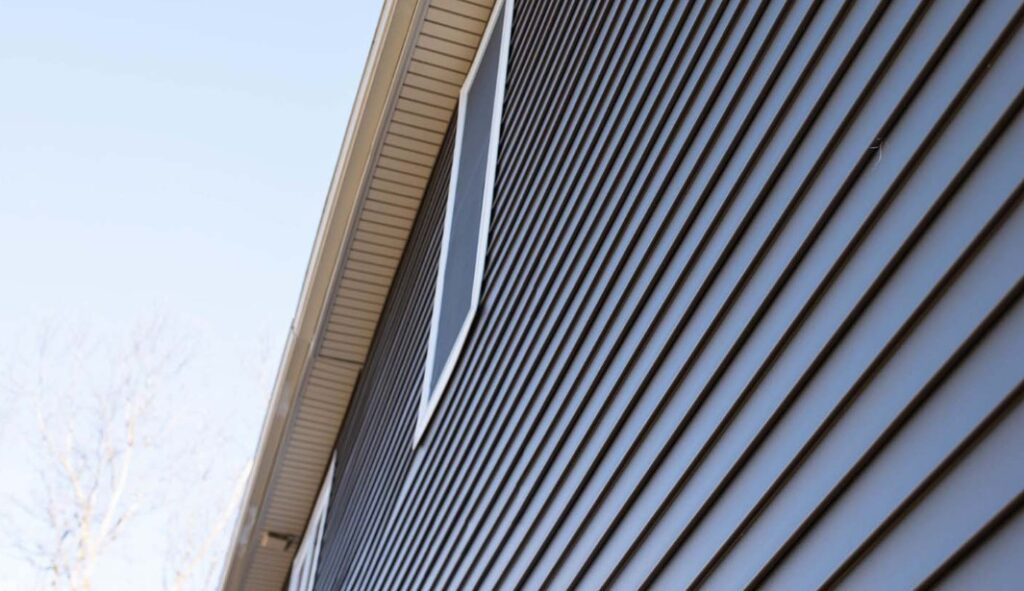
Vinyl siding is one of the most affordable and widely-used siding materials. CertainTeed’s Monogram® vinyl siding is known for its durability, low maintenance, and ease of installation, making it a popular choice for homeowners who want to increase their home’s resale value without breaking the bank.
- Features: Vinyl siding is made from PVC and is available in a wide variety of colors and textures. CertainTeed’s Monogram® offers a highly durable, long-lasting solution with a high-definition finish that mimics the look of traditional wood.
- Pros: Affordable, low-maintenance, highly resistant to weather, and available in numerous colors and styles. Vinyl siding does not require painting and is easy to clean.
- Cons: Less durable than fiber cement, especially in extreme weather conditions. Vinyl can fade over time and may require repairs if damaged.
- Price: Typically costs between $0.90 and $1.30 per square foot, making it one of the most affordable siding options.
- Where to Buy: CertainTeed Monogram Siding
Engineered Wood Siding (LP SmartSide)
LP SmartSide is an engineered wood siding that provides the aesthetic of natural wood with enhanced durability. It’s an excellent option for homeowners looking for a more traditional, rustic look while still benefiting from the durability and low-maintenance features of modern siding materials.
- Features: LP SmartSide is made from wood strands bonded together with resin and a protective coating, which gives it strength and resistance to the elements. It’s available in a variety of textures and finishes, including smooth, cedar grain, and rough-sawn.
- Pros: Strong and durable, easy to install, highly customizable, and comes with a manufacturer’s warranty. LP SmartSide is also resistant to termites and rot, which is an advantage over traditional wood siding.
- Cons: Higher maintenance than vinyl, as it may need to be repainted every 5-7 years. Not as fire-resistant as fiber cement siding.
- Price: Costs between $0.80 and $1.20 per square foot, making it a mid-range option in terms of pricing.
- Where to Buy: LP SmartSide Siding
Transactional Insights: Where and How to Buy Siding
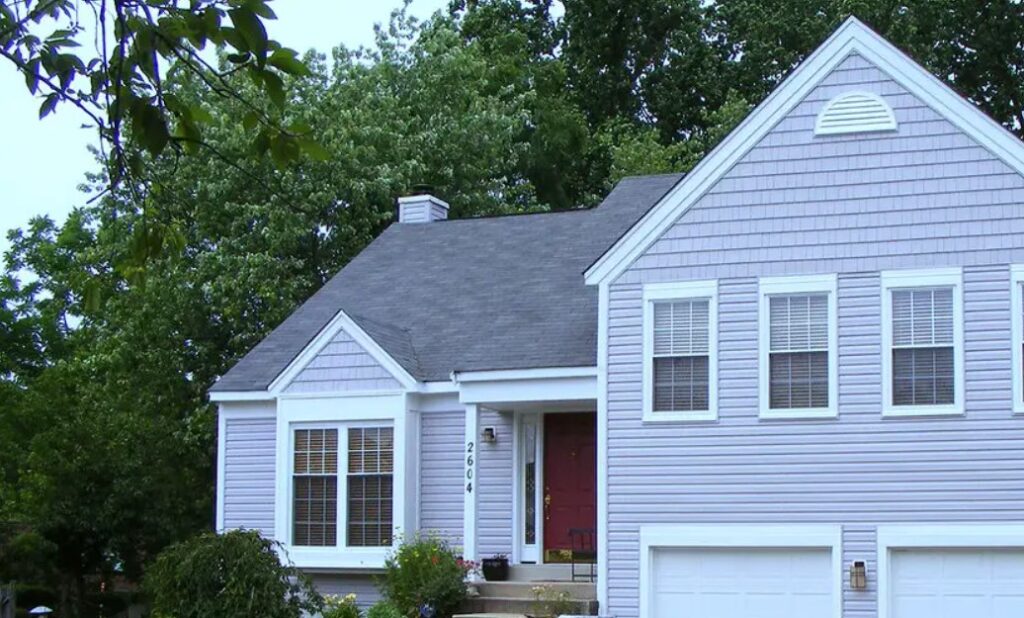
Once you’ve decided on the siding material and color that fits your home, the next step is purchasing it. Here’s how to go about buying siding for your home:
- Where to Buy: Many large home improvement retailers, such as Home Depot, Lowe’s, and local suppliers, carry a wide range of siding options. You can also purchase directly from manufacturers’ websites for a more specialized selection.
- How to Buy: It’s important to calculate the square footage of your home and consult with a professional installer to determine how much material you need. Many manufacturers offer free online calculators to help with this process. Additionally, you may want to consider purchasing all your siding materials at once to save on shipping and ensure color consistency.
- Price Range: As discussed, the price for siding materials varies widely depending on the material and brand. Fiber cement siding can cost between $0.70 and $1.50 per square foot, while vinyl siding typically falls between $0.90 and $1.30 per square foot. Engineered wood siding, such as LP SmartSide, is often priced between $0.80 and $1.20 per square foot. Be sure to request quotes from several suppliers to get the best deal.
FAQs
Q1: Does new siding increase home value?
A1: Yes, replacing your old siding with new, high-quality material can significantly increase your home’s resale value. Studies show that siding replacement can yield a return on investment (ROI) of 75% to 80%, making it one of the best home improvement projects in terms of resale value.
Q2: How much does new siding cost to install?
A2: The cost to install new siding depends on the material chosen, the size of your home, and labor costs in your area. On average, expect to pay anywhere from $5,000 to $15,000 for a full siding installation, including materials and labor.
Q3: How much does new roof increase home value?
A3: A new roof can also significantly increase your home’s value, with studies showing an ROI of about 60% to 70%. A new roof not only improves curb appeal but also reassures potential buyers about the home’s overall condition, preventing them from worrying about costly future repairs.
By investing in new siding, you’re not just enhancing the aesthetic appeal of your home; you’re also making a smart financial decision that can provide a high return on investment. Whether you choose fiber cement, vinyl, or engineered wood siding, the right choice for your home can make all the difference in increasing its resale value.
